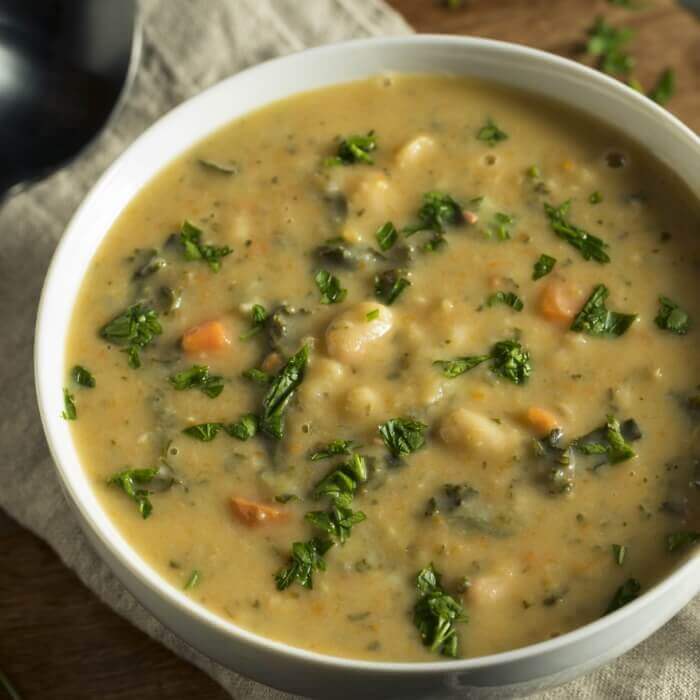
Cabbage and White-Bean Soup
Garlic, rosemary and Prosciutto give the popular combination of cabbage and beans a wonderful, country Italian accent. Served with crusty peasant bread and a salad, this hearty soup makes a great winter meal.
Ingredients
- ½ pound (about 1 cup) dried white beans, preferably cannelloni
- 2 quarts Chicken Stock, or canned low-sodium chicken broth
- 4 teaspoons chopped fresh rosemary, or 1½ teaspoons dried, crumbled
- 2 teaspoons chopped fresh thyme, or ¾ teaspoon dried
- 2 bay leaves
- 2 teaspoons salt
- ¼ cup olive oil
- 4 onions, chopped
- 4 cloves garlic, minced
- ¼ pound thin-sliced Prosciutto, cut crosswise into 1-inch strips
- 1½ pounds cabbage, preferably shredded
- 2 ribs celery, chopped
- 2 pounds tomatoes (about 4), peeled, seeded and chopped
- ¼ teaspoon fresh-ground black pepper
Directions
- Soak the beans overnight in enough cold water to cover by at least 2 inches. Drain.
- Put the beans, chicken stock, rosemary, thyme and bay leaves in a large pot. Bring to a boil, reduce the heat and simmer, partially covered, for 1 hour. Add the salt and continue cooking until the beans are just tender, about 15 minutes longer. Discard the bay leaves.
- In a large frying pan, heat the oil over moderately low heat. Add the onion, garlic and Prosciutto and cook, stirring occasionally, until the onions are translucent, about 5 minutes. Raise the heat to moderately high. Add the cabbage, celery and tomatoes and cook, stirring, until the cabbage wilts, about 7 minutes.
- Add the cooked vegetables to the beans and simmer, partially covered, until the cabbage is just tender, about 15 minutes. Stir in the pepper. If the soup thickens too much on standing, stir in some water.
Note: Dried legumes can take anywhere from thirty minutes to three hours to cook. The big range in cooking time is due primarily to the great variety among legumes. Hard water can increase cooking time substantially, as can the age of the bean. Older, dryer beans take longer to cook, though even very old beans are still good. To test beans for doneness, eat one. If it is to be served whole in a soup, the skin of the bean should be slightly chewy and the interior soft. For pureed soups, the whole bean should be soft.